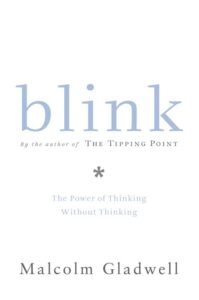|
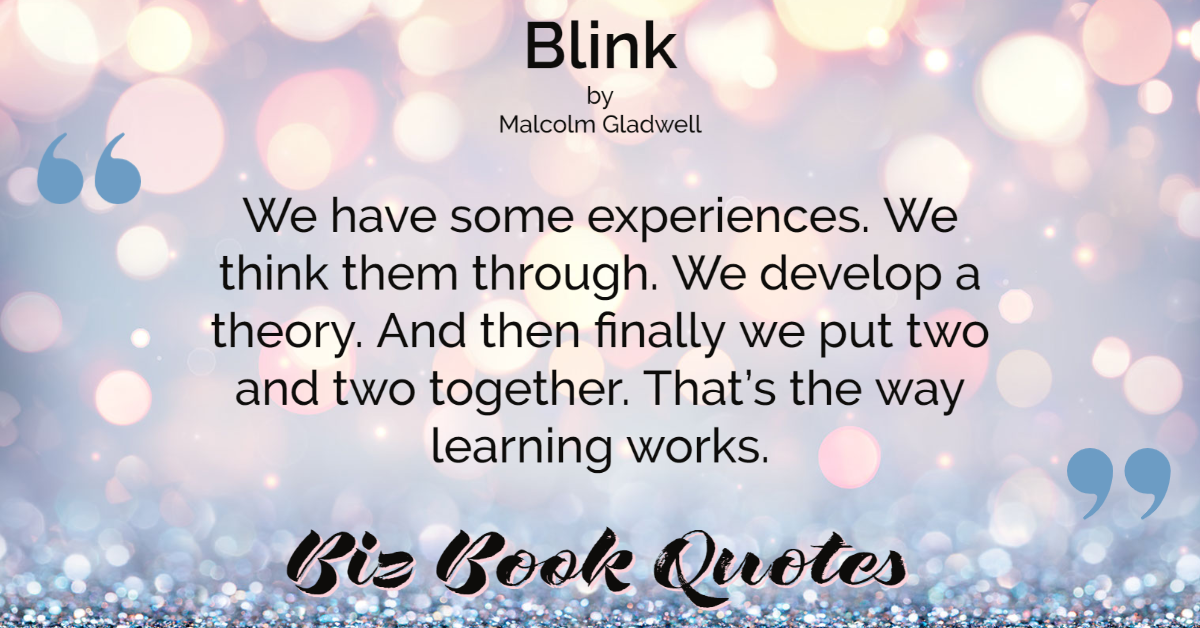
|
Blink:
We have some experiences. We think them through. We develop a theory. And then finally we put two and two together. That’s the way learning works.
|
9 |
|
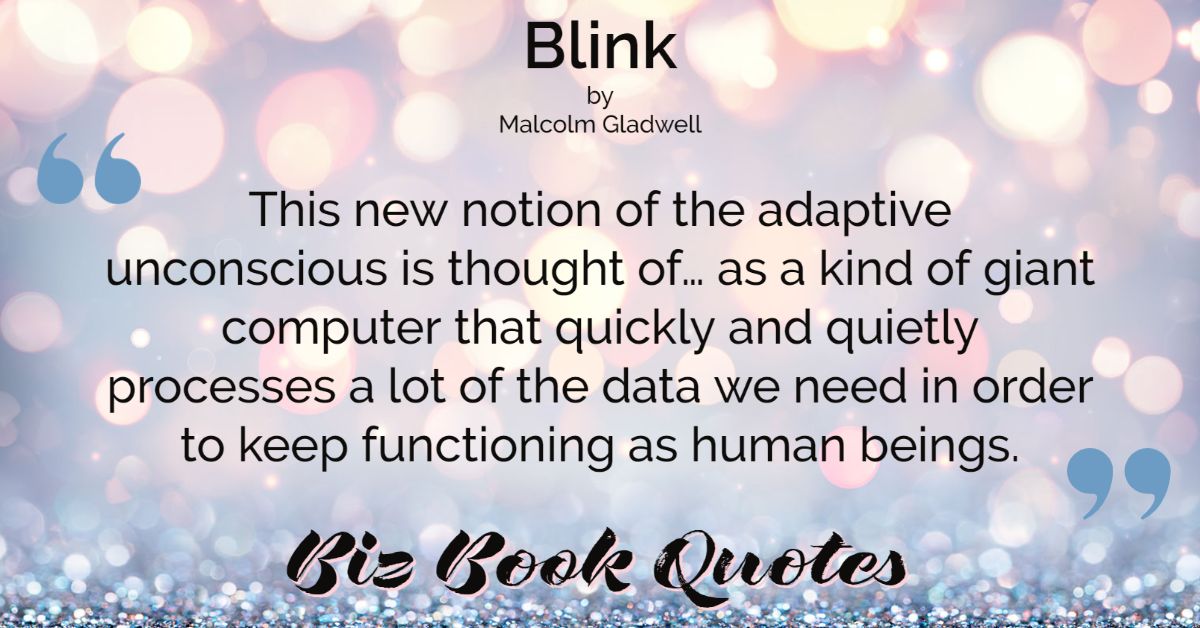
|
Blink:
This new notion of the adaptive unconscious is thought of… as a kind of giant computer that quickly and quietly processes a lot of the data we need in order to keep functioning as human beings.
|
11 |
|

|
Blink:
We live in a world that assumes that the quality of a decision is directly related to the time and effort that went into making it.
|
13 |
|
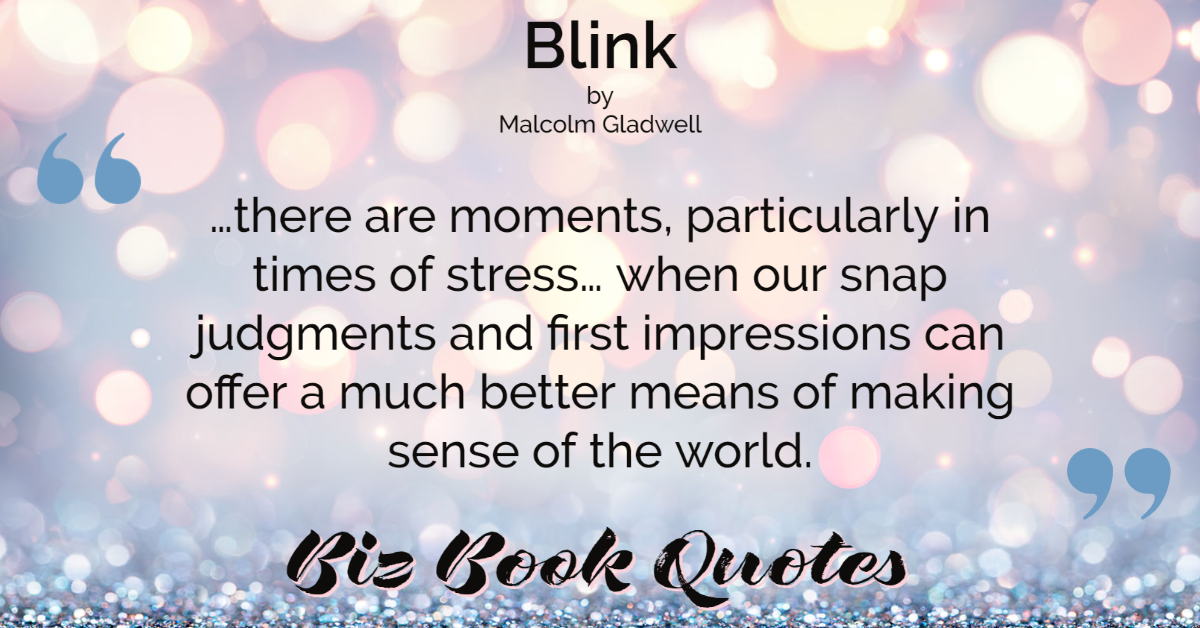
|
Blink:
…there are moments, particularly in times of stress… when our snap judgments and first impressions can offer a much better means of making sense of the world.
|
14 |
|
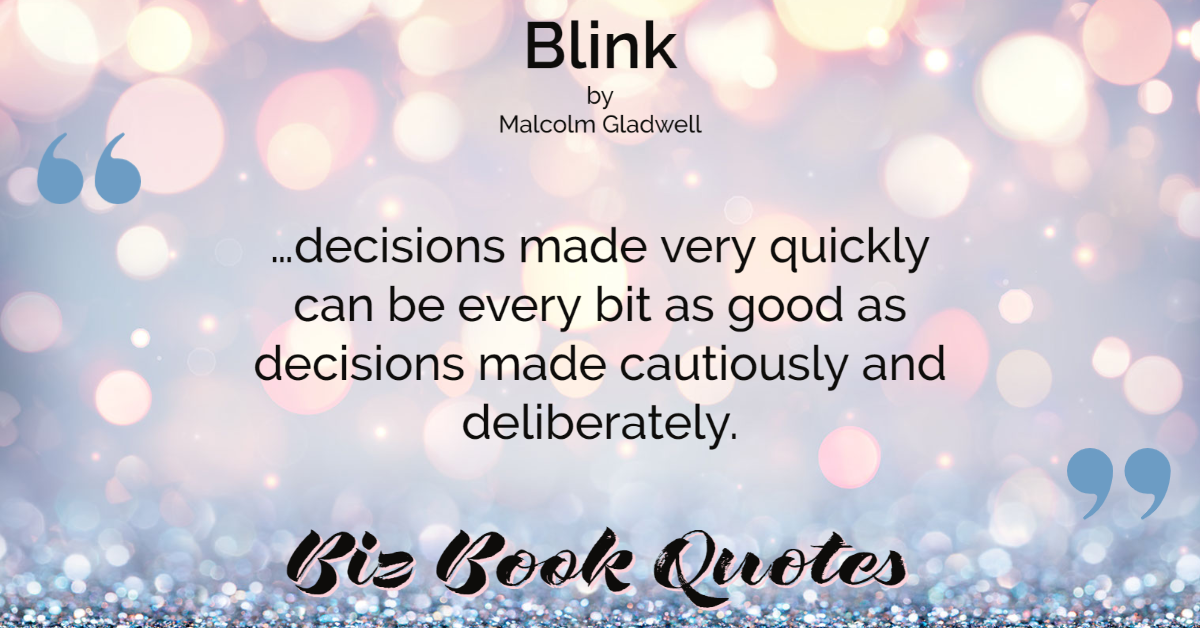
|
Blink:
…decisions made very quickly can be every bit as good as decisions made cautiously and deliberately.
|
14 |
|
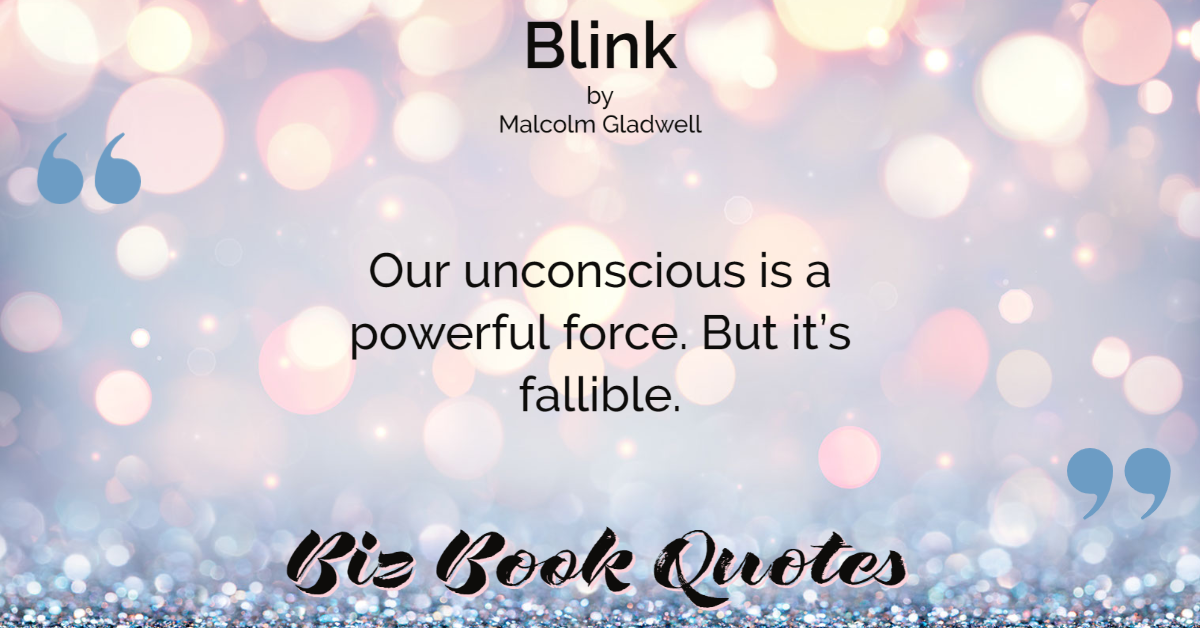
|
Blink:
Our unconscious is a powerful force. But it’s fallible.
|
15 |
|
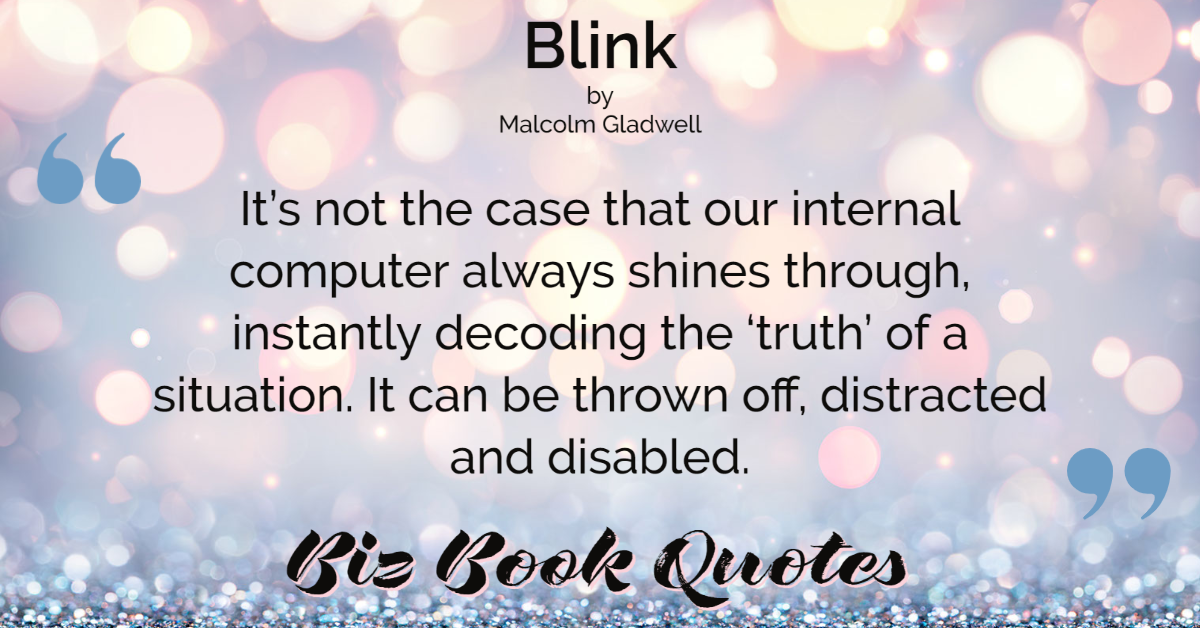
|
Blink:
It’s not the case that our internal computer always shines through, instantly decoding the ‘truth’ of a situation. It can be thrown off, distracted and disabled.
|
15 |
|
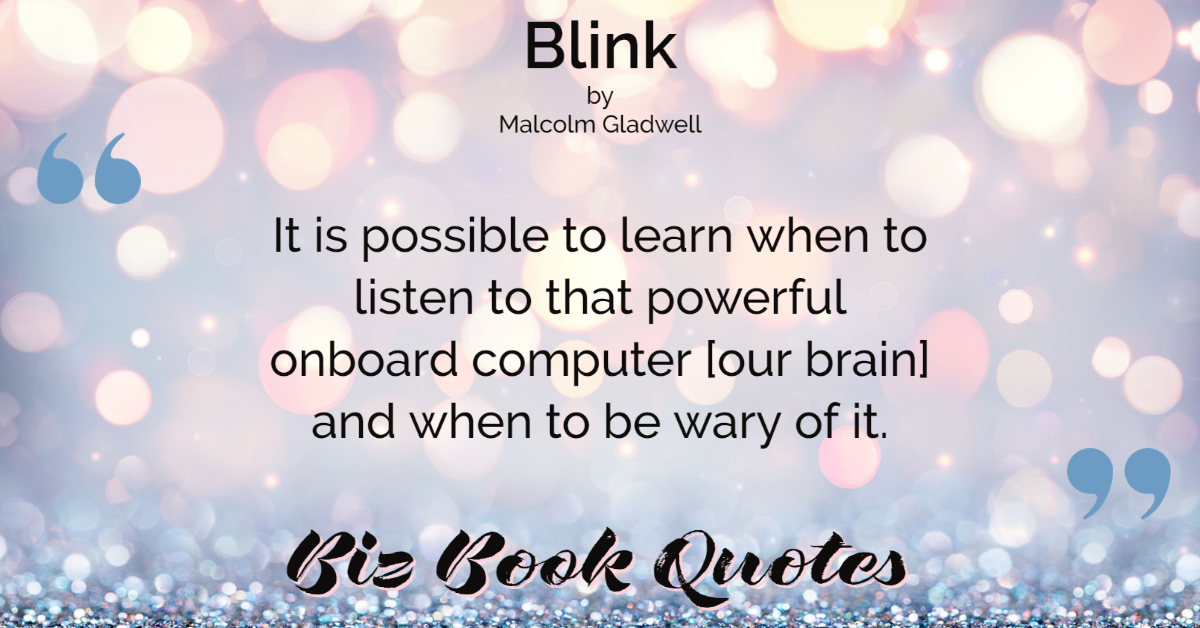
|
Blink:
It is possible to learn when to listen to that powerful onboard computer [our brain] and when to be wary of it.
|
15 |
|
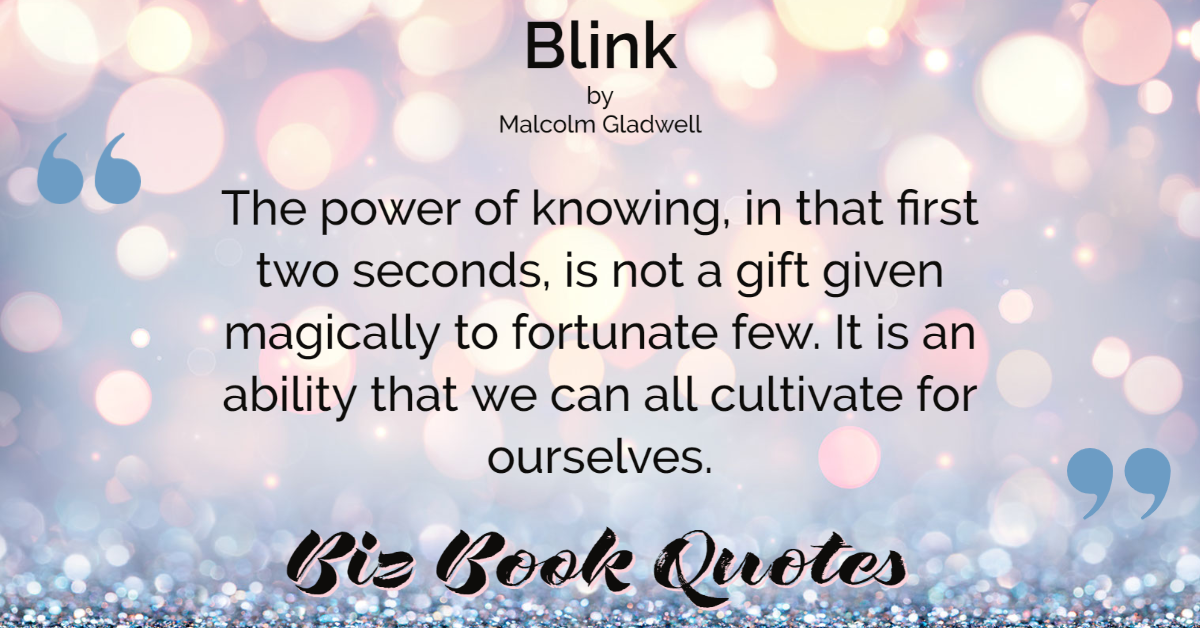
|
Blink:
The power of knowing, in that first two seconds, is not a gift given magically to fortunate few. It is an ability that we can all cultivate for ourselves.
|
16 |
|
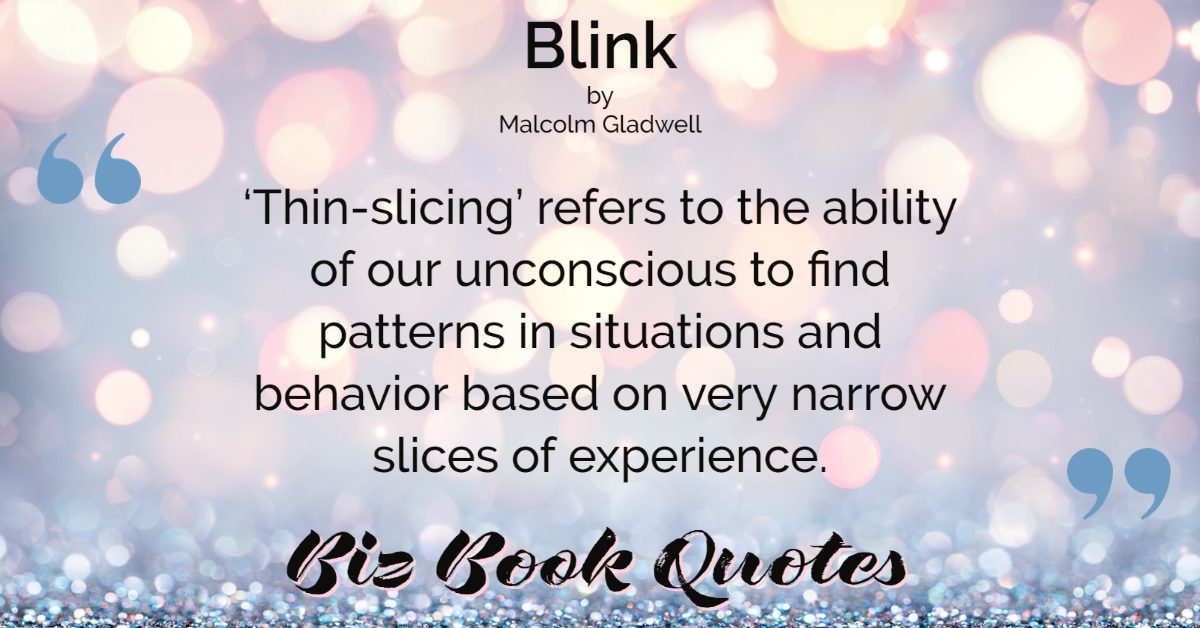
|
Blink:
Thin-slicing’ refers to the ability of our unconscious to find patterns in situations and behavior based on very narrow slices of experience.
|
23 |
